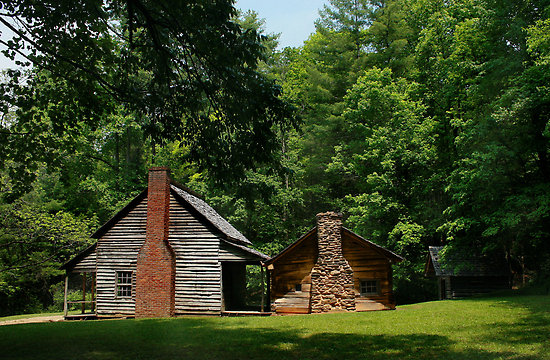Cades Cove’s Henry Whitehead Place is located near the Chestnut Flats part of the cove. Constructed between 1895-1896, the cabin was built by Matilda “Aunt Tildy” Shields and her second husband, Henry Whitehead.
Matilda and her young son were abandoned by her husband. Though rare, it did happen in those days, even in Cades Cove. It was Matilda’s brothers who took it upon themselves to build a small cabin for her in the aftermath. Also included were a fireplace and chimney. So as you can see, it wasn’t an overnight job, it took some time. But as it were, it had to be built quick and its logs reflect the rough-hewn style – made with a felling axe, the stone chimney made of rubble.
In the coming years though, fortune would shine its light again on Matilda when she met the widower Henry Whitehead and re-married. It was Whitehead who built her one of the nicest log homes in Cades Cove, replacing the one her brothers had built. It was so nice for the time that it had a brick chimney, unheard of in Cades Cove then. Bricks had to be made by the individual in those days and were considered quite the luxury. To do this, settlers took a clump of clay soil, dug it out and then filled the hole with water. The surrounding clay soil was then scrapped and stirred with a hoe until thick and smooth. Then the wet clay was put into molds where the bricks were dried. Afterwards the bricks were fired to make them durable.
Aa for the rest of the Whitehead’s cabin, it was constructed of square shaped logs that were smoothly finished, at least the portion facing the inside of the cabin. The cabin looked a lot like the frame homes which were soon to become fashionable when the first sawmills came to Cades Cove. That’s how nice it was for its time.
The cabin could also really hold in the warmth as square logs were well insulated due to each log’s four inch width. There was virtually no space between the logs either. The Henry and Matilda Whitehead place is the only square-sawed log home to remain in Cades Cove as well as the only one left in the entire Great Smoky Mountain National Park. It is considered a transition house from the early Cades Cove cabins to the modern frame homes that later were popular in Cades Cove.
